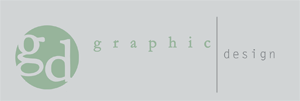Graphic design is the
most ubiquitous of all the arts. Graphic design is everywhere,
touching everything we do,
everything we see, and everything we buy: we see it on billboards
and in books, taxicabs, on web sites, cereal
boxes, and even the hang tags on the clothes we buy... the list goes
on and on.
|
|
Graphic Design is complex
combinations of words and pictures, numbers and charts, photographs
and illustrations that, in order to succeed,
demand the clear thinking of a particularly thoughtful individual who can orchestrate these elements so they all add up to
something distinctive, or useful, or playful, or surprising, or subversive, or somehow unforgettable.
|
